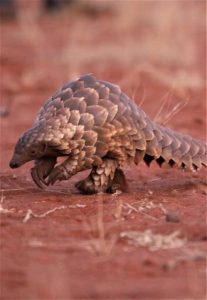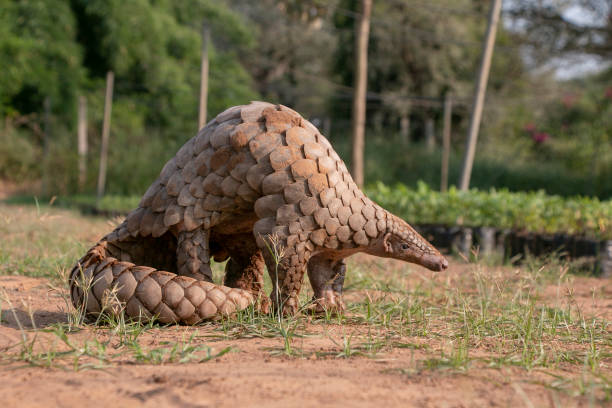The biggest threat to pangolins seem to be man.
Despite the fact that these creatures are relatively unknown to many, the hunt for them keeps being on the rise.
Illegal trade of pangolins have reached epidemic proportions. These animals are hunted, killed and trafficked for money.
Since Asia, have ranked as the highest known demography in demand of pangolins for different purposes.
In China and Vietnam, they serve purposes from luxury local delicacy to traditional medicines when their scales are harvested and more.
Pangolins skins(leather) and other parts are also used for various purposes such as fashion.
In the last decade, over a million pangolins have been traded illegally and currently this animal tops any other as the most heavily trafficked wild mammal in the world.
To make matters worse, there is rapid loss and deterioration of known pangolins’ habitat further causing added pressure on the dwindling numbers of remaining pangolins.
As a result, there is a rampant illegal global trade in pangolins and their parts.
Rapid loss and deterioration of available habitat places added pressure on the dwindling numbers of remaining pangolins.
All eight species of pangolins are threatened with extinction, it is difficult to turn a blind eye which may be at the cost of extinction.
Scientific Facts of Treats and Dangers to Pangolins
In 2016, all eight species of pangolin were re-classified to Appendix I under the Convention in the International Trade in Endangered Species (CITES) to give them the highest level of protection, though illegal trade seems to be quite unfazed by this.
China recorded the greatest seizure of pangolin scales in 2017 which accounted to about 11.9 tonnes, this is equivalent to around 20,000 pangolins.
For their leather, the U.S is not exactly guiltless, more than 165,000 pangolin skins has been legally exported from Asia to the US between 1980 and 1985.
Data collection showing customs officials seized about 30,000 illegally imported pangolins between 2005 and 2014 only.
A threat to Pangolins is seen in the use of their skins to manufacture footwears, belts and wallets, and this makes the US market fractionally responsible in the illicit trade in pangolins.
Why Is There High Demand for Pangolins in Asia?
This 80 million-year-old species is on the brink of extinction due to poachers.
Across the globe, trafficking networks have shifted their focus from Asia to Africa, in a quest to satisfy growing consumer demand.
Asian pangolin markets are well-known to be stirred by a voracious demand for pangolin meat, as well as their scales.
This meat is used to make all kinds of local delicacies that have a way of pointing to an individual’s status quo amongst the countries’ elite and growing middle classes.
The tongues of this animal is incorporated into special soups, even its blood is drained for drinking and used in tonic wines.
Pangolin scales have been believed to have herbal medicinal qualities, such as – add nourishment to kidneys, a great aphrodisiac, help lactating mothers to secrete milk, cure skin diseases and improve blood circulation etc.
None of which have been scientifically proven. This belief have been the reasons behind the huge sums of pangolins on the black market.
More can be said about threat to pangolins but all that really counts lies on the solution that these species need to be around with us, in the next century.
How Pangolins Respond to Threats

Most usually when a pangolin feels threatened it rolls up into a ball to be protected by its tough scales.
Pangolin are sometimes called ‘walking pinecones’! Most species of pangolins are nocturnal, and only come out at night.
When pangolins walk they tend to keep their front paws up, hence walking on their hind legs.
As a defense mechanism, pangolins have strong claws on their front feet which they mostly use in breaking into t Frequently Asked Questions ermite mounds and ants nests.
FAQ
What is the main reason that the pangolin is endangered?
One main reason pangolins are endangered are for their parts and they money that comes from trading them illegally.
Also, habitat loss is another major cause of its near extinction.
With over 1 million pangolins brutally murdered for black-market trade in the past decade; this is simultaneous to 11 pangolins every hour.
Conclusion
It is not enough to sympathize with these creatures as they are being hunted in despicable numbers.
It is our recommendation that for a threat to pangolins to have a significant positive impact then most hands must be involved.
Poachers should be stopped and made to face consequences, while more and more stringent measures should be put in place to guard pangolins and their habitats.
